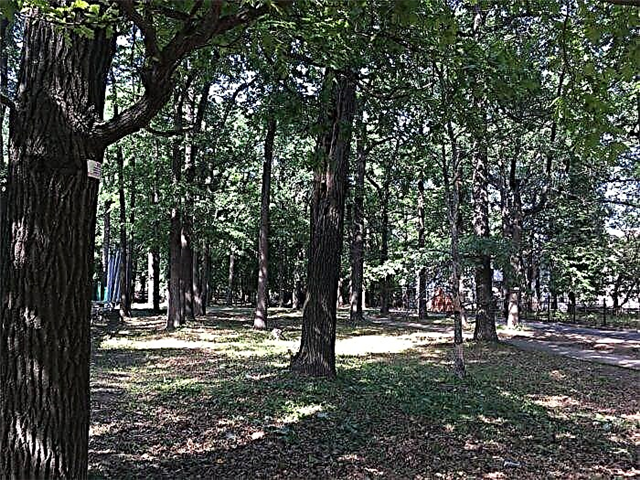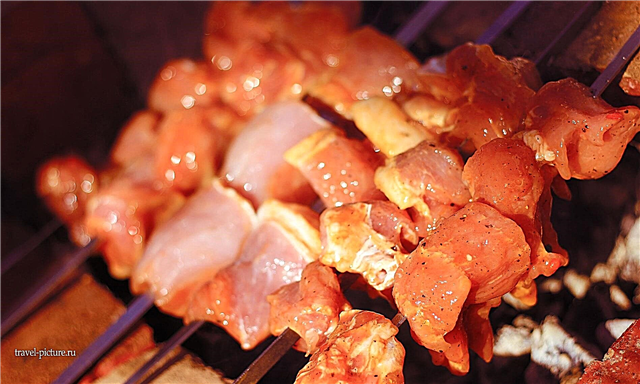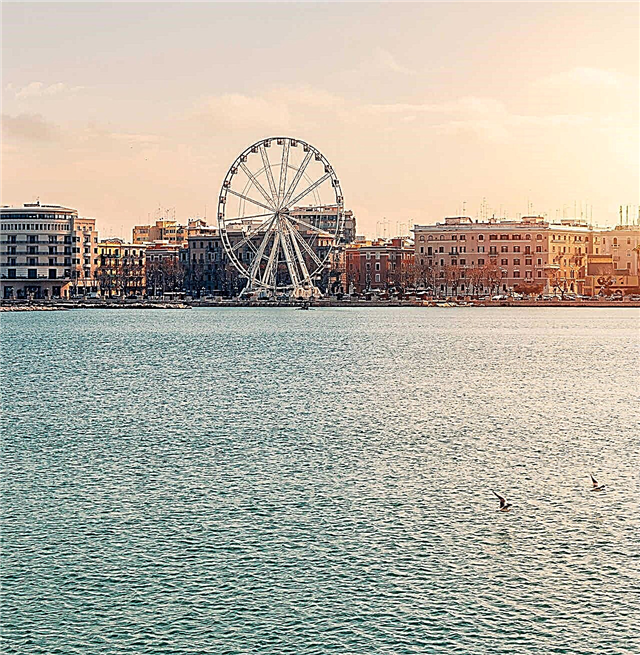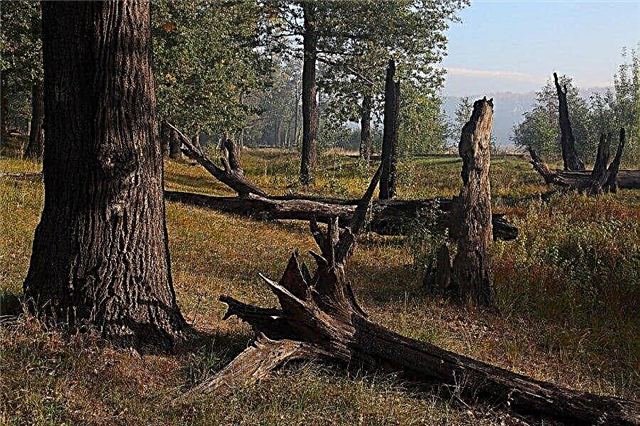The glorious city of Nizhny Novgorod is known for the historical events that took place on its territory. The nature of the Nizhny Novgorod land has always attracted the attention of other peoples. The reason for this was the natural wealth that filled the outskirts of Novgorod. The Nizhny Novgorod region is attractive for tourism even today.
Karst caves, grottoes, lakes, forest-steppe and mixed forests alternate in the vicinity of the city with swamps, oak forests and botanical gardens. The region stretches from north to south. The administrative area is 75 thousand km². The natural attractions of Nizhny Novgorod are not only beautiful, but also of historical importance. Every year thousands of tourists come to the outskirts of the city to follow the tourist routes.
Natural monuments of Nizhny Novgorod
The main natural attractions of the city, protected by the state.
Lake Meshcherskoye
The closed body of water once had a water connection with the Volga. The width of the lake within the city limits is 140 meters. On the lakeside coastline there are beaches and equipped recreation areas for the townspeople. Swimming in the lake itself has long been prohibited due to the pollution of the water, but you can come to Lake Meshchersky for a picnic at any time. The status of a natural monument makes the reservoir inaccessible to many types of transport (you cannot drive closer than 300 meters).

Shchelokovsky farm
The open-air museum of nature and architecture is surrounded by the unrivaled beauty of the Maryina Grove. The forest park covers 38 hectares. This square not only grows beautiful trees, but also exhibits examples of architectural architecture of the 17th – 19th centuries. Having bought a ticket to the Shchelokovsky farm, tourists seem to be transported to another dimension, where birds sing beautifully and foliage rustles. Folklore ensembles with performers from all over the Nizhny Novgorod region often perform on the farm.

Botanical Garden of Nizhny Novgorod State University named after N.I. Lobachevsky
A unique repository of rare plants is the Lobachevsky Botanical Garden in Novgorod. Subtropics, Far Eastern taiga and even Japanese gardens await visitors in this place every day. The garden's live displays cover an area of 35 hectares. A research center operates on the territory of the natural monument. The collection of the Botanical Garden contains a large number of plants listed in the Red Book.

Tract Sluda
On the steep bank of the Oka there is a tract named after the village of Sluda. The green hills of the tract can be visited on foot or by car. The territory of Sluda itself adjoins the famous Switzerland park, where there are mysterious adits. Diggers love to climb on them. On the hills of this area, many species from the Red Data Book grow. From different sides, the tract is limited by residential buildings.

Raspberry Ridge
The oak and linden forest of the Raspberry Ridge has undergone active felling. What is left is still worthy of human attention. The ridge is located on the right bank of the Oka. Excursions consisting of schoolchildren and students often come to these places. The mixed forest is rich in representatives of the rare Nizhny Novgorod flora. You can find the ridge in the Prioksky district near Sluda.

An old oak tree near the Kashirin House Museum
The natural monument is located in the courtyard of house 23. This place should be looked for at a distance of 70 m from the museum. An ancient oak tree with spreading branches is surrounded by raspberry bushes. The circumference of the base of the tree is 4 meters. The natural monument is of regional importance. The majestic oak makes a strong impression on those who see it for the first time. Soon the venerable oak will be close to 200 years old.

Malyshev's mane
The attraction is based in the Oka floodplain. Rare species of undergrowth plants grow on the rampart overgrown with mixed forest. On the territory of the natural formation there are trails along which tourist routes are laid. Near this place there is a residential quarter 28. In the area of Malyshevskiye Grivas there are several small lakes, one of which is of the same name. Spotted ants, kingfishers, gulls and terns have inhabited the area since time immemorial.

Talanova grove
In the south-west of the Avtozavodsky forestry there is a majestic natural monument called Talanova Grove. Oak groves, floodplain meadows, areas with viburnum and mountain ash make the grove one of the most beautiful places in the vicinity of Novgorod. Since Talanova Grove borders the Oka, there are areas on its banks overgrown with rare white willow. The nearest village to the grove is Gnilitsy.

Striginsky Bor
Bor is bordered by the village of Strigino from the north. The forest area is adjacent to the Avtozavodsky district. The forest itself consists of a pine forest. The lingonberry pine forest occupies more than 10% of the forest, and is the indigenous "inhabitant" of the area. Some of the trees in the forest are up to 180 years old. Bor is inhabited by various bird species. From the south, Strigino is bounded by the Oka, so there are beaches, childcare facilities and other infrastructure.

Gnilitsky dachas
The Nizhny Novgorod nature monument is located on the left bank of the Oka floodplain. The forested part is smoothly bounded by the river Gnilichka. Part of the protected area is given over to private development. The area of the natural formation is 456 hectares. The main value of the Gnilitsky dachas is recreational. The forest and undergrowth of this area is very rich in various types of plants and trees.

Lake Hospital
In Nizhny Novgorod, there is hospital 39, next to which Lake Bolnichnoe was created by hand. A reservoir of artificial origin feeds the Levinka River. Equipped recreation areas are located along the shores of the lake. There is also a city beach with an official status. The area of the natural formation is 5 hectares. In summer, there are always a lot of tourists in this place.

Lake Vtorchermet
Lake Vtorchermet is based in the city limits. Once upon a time there was a sandy canyon on this place. Then it was filled with water and a beach area was organized on the shore. The attraction covers an area of only 1 hectare. The vegetation around the lake is mostly shrub. Every season Novgorod residents argue about whether it is possible to swim in this lake.

Park of the regional neuropsychiatric hospital №1
The park area is 17.5 hectares. The hospital itself is located almost in the center of the park. In this place, not only conifers, but also fruit trees grow. The first plantings were laid here in the 20th century. The park was laid out in a regular landscape style. Five buildings from the hospital complex have ancient architecture and were designed by the architect Malinovsky. Other buildings are dated to later dates of construction.

Manchurian nut at the corner of Osharskaya and Nevzorov streets, 46
The handsome Manchurian Walnut stands 6 meters away at the southwest corner of the building. The tree has a height of 20 meters. At last count, the walnut is over 70 years old. It is not known how the exotic tree got to Nizhny Novgorod. Perhaps it was purposefully planted by the townspeople almost a century ago.

Oak alley in Kuznechikha-1
The area of the natural monument is 1.2 hectares. Oak Alley begins from Bykov Street. The trees in the alley are on average 80 years old. Oaks in this place are planted in a nesting way. Some specimens reach 20 meters in height. The diameter of oak trees of 30 cm prevails among the alley. Walkways are laid almost throughout the entire territory of the attraction, which are also responsible for soil drainage.

Two long-lived oaks along Belinsky street, 86
Two oak trees grow in the courtyard of house 86. The trees are behind the fence and look alike like twins. The diameter of one barrel is 1.2 meters. The trees stretch up 20 meters to the sky. Each oak in the yard is 180 years old.They are historical evidence of what the flora of the Nizhny Novgorod region was like before the modern city appeared here.

Two long-lived poplars on Chkalov street, 11
The age of long-lived poplars on Chkalov is over 100 years. Each poplar is crowned with a three-peaked trunk. The height of the tree is 25 meters. Barrel diameters are approximately 1 meter. Trees have aesthetic and scientific value. This type of poplar is called balsamic due to the smell of leaves that spreads around on a hot day.

Long-lived oak along Novosibirskaya street (Comintern)
A unique tree is located between the school and the kindergarten. Its height is 18 meters. The crown of oak is divided into three full-fledged trunks. Oak on the Comintern is at least 150 years old. Once upon a time in the place where a lonely oak grows today, there was a large oak grove.

Long-lived larch along Minin street, 20
Siberian larch grows in the west of the large courtyard of house 20. Linden trees are located around the old tree. The height of the long-lived tree is 25 meters, and its diameter is 50 cm. The age of the natural monument is not less than 100 years. Larch feels good in urban conditions, as this type of wood is gas resistant.

Dubrava on Gagarin Avenue
The main attraction of Gagarin Avenue stretches for 5 hectares. Elms, oaks, birches, maples and lindens form the basis of the oak forest flora. The undergrowth is represented by willow, rowan, raspberry and acacia. Among the other trees of the oak forest, there is a rare American maple. Unfortunately, some parts of the forest are very littered with people.

Koposovskaya oak forest
The Koposovskaya oak forest stretches over almost 103 hectares. There is a natural monument near the village of Koposovo. In the northeast of the oak forest, the Chernaya River flows. The oaks in this area are 25 meters high. Their age is about 250 years. Muskrats live in the lake on the territory of the oak forest. The forest is home to a wide variety of species of birds.

Pine Veymutova along Minin Street, 17
The tree grows on a lawn 20 meters from house 17. The diameter of the pine trunk is 40 cm. The height of the tree is 20 meters. The pyramidal crown and blue needles are the hallmarks of a natural monument within the city limits. Although the pine is more than 70 years old, the tree still bears fruit. Bumps regularly appear among the coniferous paws. The Weimutov pine in Nizhny Novgorod is one of a kind.

Long-lived poplar at the intersection of October Revolution and Chkalov streets
A beautiful poplar, which is more than 100 years old, adorns the crossroads of Chkalov and the October Revolution. The lush crown of the tree casts a very thick shadow on a sunny day. Poplar grows almost close to a residential building, but they are not going to cut it down, as it is a natural monument.

Old oak tree at 10A Studenaya street
There is a mansion house on Studenaya street. An old oak tree rises in front of him. The diameter of the tree is 2 meters. The height is 20 meters. The old patriarch with a spreading crown has been growing on this site for nearly 300 years. The unique tree is surrounded by a low fence and has not only powerful roots, but also an incredible crown. It is the oldest oak tree growing in the city.

Smirnovsky dachas
The natural monument has an area of 137 hectares. On the one hand, Smirnovskie dachas border on the airport, on the other, on the railway. Birch forests, oak forests and willows - this is what constitutes the basis of the nature of Smirnovsky dachas. Since the mixed forest surrounds summer cottages and residential buildings, it is not difficult to get there. On the territory of Smirnovsky dachas there are about 50 species of birds.












